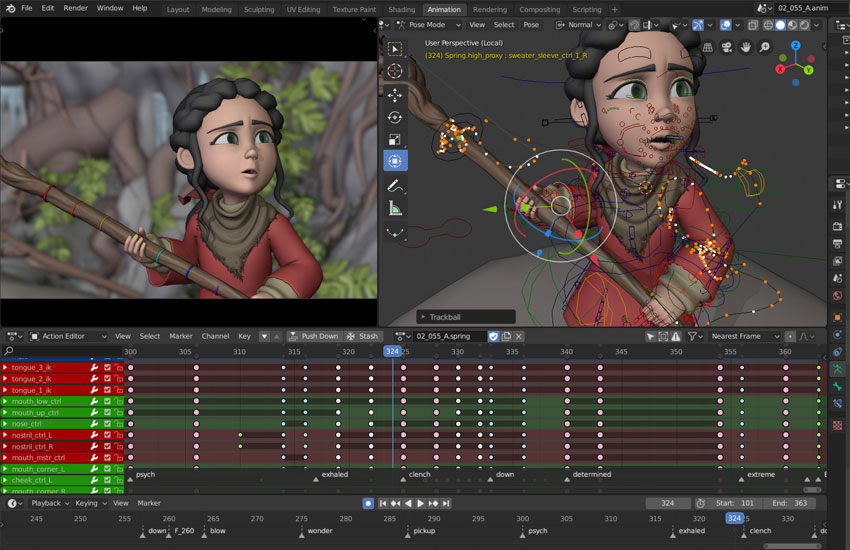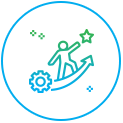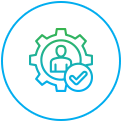Are You Interested In Games Development? Contact Us.

skills with CG Games and Animation
Game Development
Course in Ahmedabad
delivers top-notch, industry-focused training in the art and science of
game design and development.

Development Institute #1
Choice For Developer

Training Program
EXPLORE PREMIER CAREER-ENHANCING COURSES
Master 3D Animation, Game Design & Development
with Our Exemplary Training Program
Blender 3D Animation
You will learn how to use Blender to create powerful open-source 3D modeling, texturing, lighting, rigging, animation, and rendering.
Unity Game Engine
You will learn how to use the Unity game engine to create engaging and immersive games for a variety of platforms.
Unreal Engine
Welcome to Unreal Engine Pro Course, where you can learn the art of game development using the Unreal Engine!
AR/VR
You will learn how to use AR/VR technologies in gaming, education, healthcare, architecture, and entertainment.
DISCOVER CG GAMES AND ANIMATION
Gujarat's Top Game Programming Institute #1 Choice for Developer
CG Games and Animation is One of The Prominent 3D Animation, Game Design, Game Programming and AR/VR Application Development Training Institute of Media and Entertain Industry.
We have been offering specialised, industry-based training in animation, game designing, game development and AR/VR application development since 2005.
- Flexible Scheduling & Fees
- Small Group Class
- Direct Access to Top Industry Mentor
We Have 17+ Years Experience in Training Institute.

WHY CHOOSE US?
Why CG Games and Animation Stands Out
Choose us for unparalleled computer graphics coaching. Our excellence is evident in hands-on learning, industry projects, and a cutting-edge curriculum. Join for innovation and inspiration.

Expert Faculty
Dedicated instructors offer industry insights, guiding through computer graphics intricacies with practical knowledge.

Cutting-edge Curriculum
Stay ahead with our trend-aligned curriculum for hands-on expertise and relevant skills

Hands-on Learning
Vibrant setting, industry projects, and modern facilities enhance transformative coaching for practical success.
WHO WE ARE?
Top-notch Game Development Trainer in Gujarat
Introducing Mahesh Gurjar,
The inspiring Founder & CEO of CG Games and Animation.
With 15+ years of teaching experience and an MCA from Gujarat University, he has helped 800+ students succeed in IT as professors, entrepreneurs, and professionals in Canada and the USA. Having taught over 5000 students, Mahesh’s expertise in the field is unparalleled. He has also conducted 500+ seminars and workshops, igniting a passion for IT and Computer Engineering.
WHO WE ARE?
Top-notch Game Programming Trainer in Gujarat
Introducing Mahesh Gurjar,
The inspiring Founder & CEO of CG Games and Animation.
With 15+ years of teaching experience and an MCA from Gujarat University, he has helped 800+ students succeed in IT, Game Design and Game Programming field as professors, entrepreneurs, and professionals in Canada and the USA. Having taught over 5000 students, Mahesh’s expertise in the field is unparalleled. He has also conducted 500+ seminars and workshops, igniting a passion for IT and Computer Engineering.

Mahesh Gurjar
Founder & CEO
With 15+ years of teaching experience, Mahesh Gurjar has not only shaped countless IT success stories but also guided students to thrive in foreign lands.
STRIKING GOLD
Our Graduates Shine in Leading Gaming Industry Positions






CG GAMES AND ANIMATION BENEFITS
Trusted by Over 5,000+
Students and Counting
More Than 5000 Students have Received Professional Training in 3D Animation, Game Design, Game Development and AR/VR Application Development at CG Games and Animation Since 2005.
VOICES OF SUCCESS
Testimonials from Our Esteemed Students
CG Games and Animation- Mahesh Gurjar sir's teaching was awesome and we can get to learn a lot of advanced technologies (IT) and things through his classes like in a friendly manner.This is my personal experience.

excellent teaching skills, "teaching is an art" and only few institutes can make these words true even if you are an average student or having difficulties understanding with online courses or other institutions, I believe this will be the best place for you to learn, don't look at the fees it will always worth.

Outstanding game training institute! The experienced trainer - Mahesh Gurjar , up-to-date curriculum, and hands-on
approach provide invaluable skills for aspiring game developers. Highly recommended!

One of the best institute for learning. I would recommend to all students who want to learn. Great facilities and faculties.
Shiv Chauhan
MG Sir is very well professional and skilled teacher for gaming and 3d. Thanks sir for guiding on bright future track.
Razaul Haque
One of the best Game Development center in Ahmedabad 👌 and learning method 8s just awesome, upto the mark.
Dharmesh Baldha
Previous
Next









